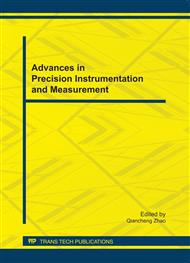p.332
p.338
p.343
p.348
p.354
p.361
p.366
p.372
p.378
Design of a Self-Tunning Temperature Controller for a Coal Sample Burning Point Detecting Instrument
Abstract:
The burning point of coal sample is a crucial physical property of coal, and it is also a key technical parameter for the exploitation, transportation, and application of coal. The national standard for coal sample burning point detection prescribes a strict rising rate of temperature when coal samples being heated. To meet with this engineering requirement, we introduce a scheme of a coal sample burning point detecting instrument, which is based on an AT89C55 MCU. The characteristics, key techniques, and solutions of the temperature control system are introduced with respect to the instrument. We employ a self-tunning Dahlin controller with a Recursive Least Squares with Exponential Forgetting (RLSEF) algorithm to solve the control problems of this time-delay, big inertia, and time-variable plant (coal sample heating furnace). Simulations show that the self-tunning Dahlin controller is able to not only compensate the time-delay and big inertia of the plant and but also adapt to the variations of plant parameters, so that the requirement for the rising rate of temperature can be fulfilled effectively.
Info:
Periodical:
Pages:
354-360
Citation:
Online since:
September 2011
Authors:
Price:
Сopyright:
© 2012 Trans Tech Publications Ltd. All Rights Reserved
Share:
Citation:


